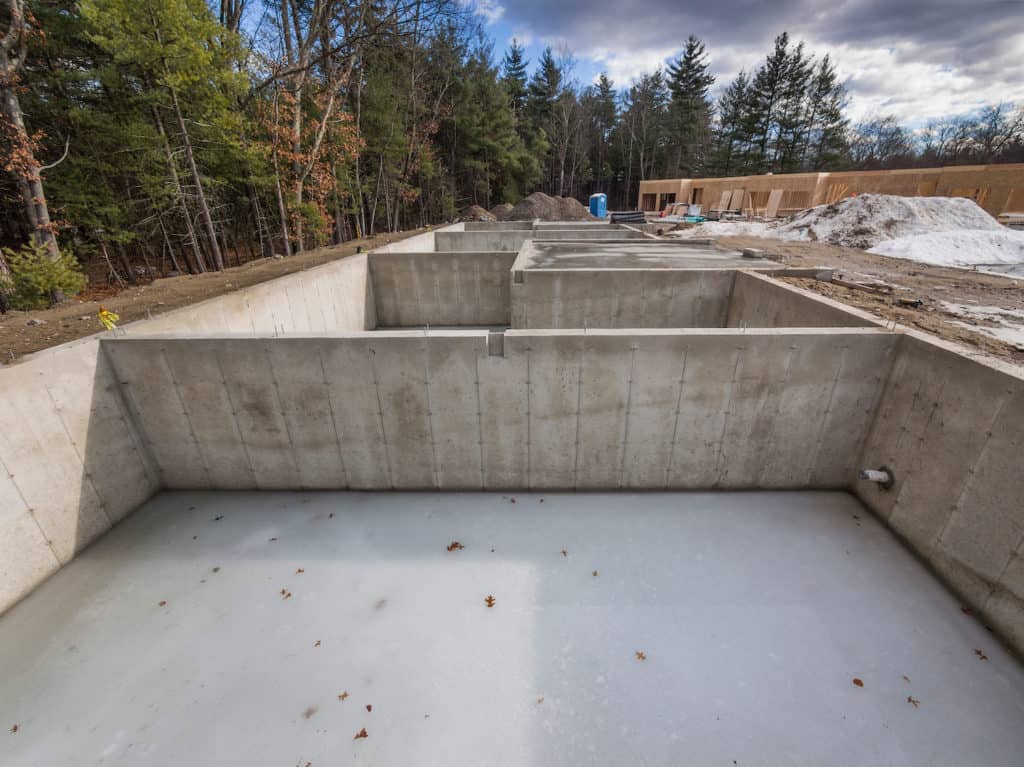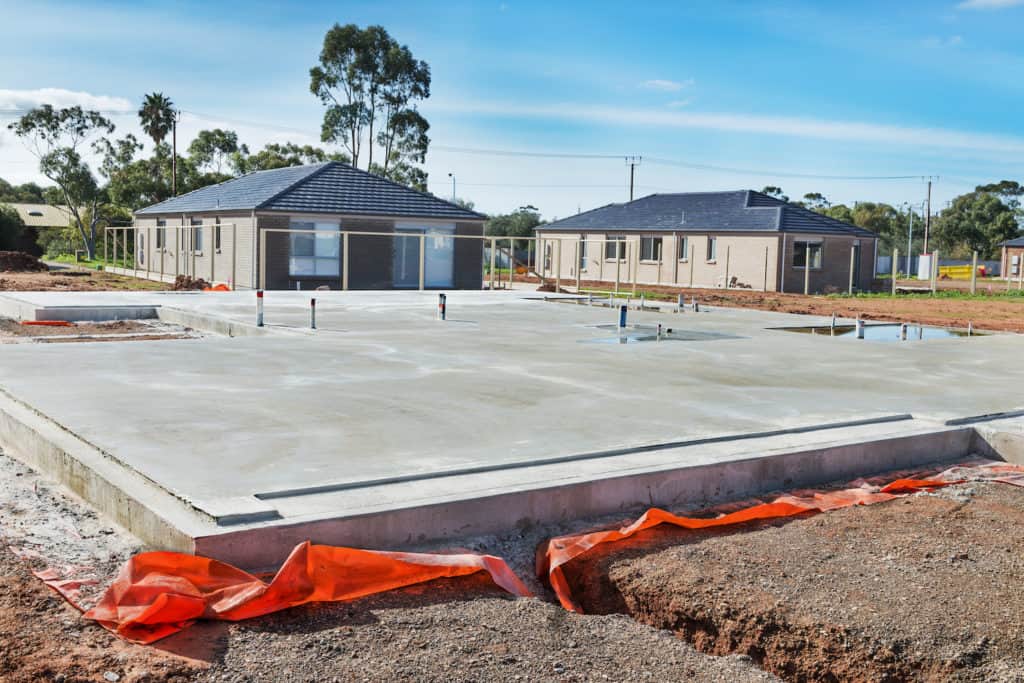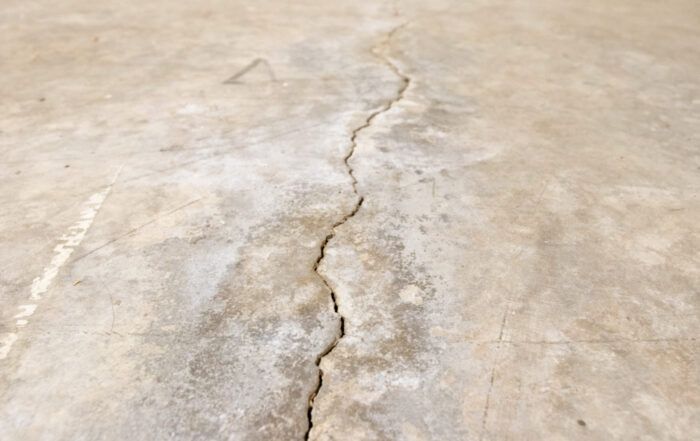Concrete Foundations: How Long Do They Last On Average? [Timeline]

Homeownership is one of the biggest investments you can make in your life. Not only do you build equity, but your home should be the place where you feel safe and comfortable. It’s normal to wonder how long certain components of your home will last, like the flooring, appliances, and concrete foundation.
On average, a concrete foundation lasts 100-200 years. However, an extremely well-built foundation could last 400+ years, and a poorly-built foundation might start to deteriorate after only 25 years.
If you’re wondering “how long does a concrete foundation last,” learn more about the details that help foundations last longer and signs of a failing foundation here.

Things That Help Concrete Foundations Last Longer
When foundations are built, they’re intended to last for hundreds of years. When all of the following components are working together, your foundation should definitely last a lifetime.
Stability
One of the main purposes of a foundation is to provide stability for the home. But homes are pretty heavy! (Most single-family homes weigh 200 pounds per square foot.)
So, foundations need to be built with stability in mind. High-quality foundation contractors need to consider both the home’s weight and the soil’s strength underneath it.
Proper materials and sizing must be incorporated into the installation process to ensure the foundation remains stable for centuries.
Quality Concrete
Foundations only stand a chance of lasting for hundreds of years if they’re composed of high-quality concrete. Concrete needs to be the ideal mixture of:
- Aggregate
- Cement
- Water
Cheap materials or mindless mixing won’t withstand the test of time in the same way high-quality concrete will. A skilled and experienced concrete contractor will know which concrete mixtures are the best use.
Drainage
Local weather conditions play a huge part in the average lifespan of home foundations. If a home foundation gets too wet, the concrete will become weak and start to crack and break.
Unfortunately, no one can escape rain entirely. So, there needs to be a great drainage system in place for slab foundations to keep them from retaining moisture. Foundations accomplish this with grading and a layer of washed rock in the slab foundation.
Washed rock is a clean, crushed stone that does not trap moisture when it gets wet. It allows water to escape, and the stone will stay dry.

Waterproofing
Along the same lines of keeping moisture out of your concrete foundation, the foundation will last longer if there are strong waterproofing methods in place. Foundations can get a variety of waterproof sealings, including:
- Bituminous coating
- Rubber membranes
- Asphalt
- Tar
Properly installed waterproofing seals typically last an average of 10 years. It’s your job as a homeowner to keep up with proper maintenance on your foundation and get new waterproof coatings every 10 years.
Along this same line, you should also stay on top of foundation termite proofing every 10-12 years to help increase your foundation’s life expectancy.
Insulation
Just like how insulating your home helps regulate temperatures and keep energy costs low, there are similar benefits to insulating your foundation. When proper foundation insulation is installed, it can significantly reduce heat loss.
Foundation insulation also helps keep moisture levels controlled which extends the life expectancy of the concrete. It even helps with indoor air quality.
4 Tell-Tale Signs of Poorly Installed or Failing Foundation
We’ve covered different things that can help a foundation last longer, so now let’s take a look at signs of a poorly-installed foundation or one that’s reached its life expectancy. Concrete foundations can get damaged from things like:
- Water/moisture retention
- The earth shifting
- Soil types
- Pressure overload from an improper installation
A damaged foundation often manifests with signs like:
1) External Cracking
Usually, tiny hairpin cracks in the exterior walls of your home or your driveway aren’t anything urgent. However, if you start to notice large, zig-zag cracks outside your home, that’s a pretty good sign that your foundation is failing somehow. Don’t ignore this sign and call a trusted concrete contractor right away.
2) Protruding Doors and Windows
Another sign of foundation problems is doors and windows that stick out of their frames. In this case, you’ll likely also notice large cracks above the window or door frames. Window and door frames that pull away from the wall are also a tell-tale sign of a faulty foundation.
3) Interior Sheetrock Cracking
Similar to when exterior walls start cracking, be sure to watch for large zig-zag cracks on your interior sheetrock. Alarm bells should definitely go off if you notice:
- The cracks run the entire height of your walls
- Wallpaper pulls away from your walls
- There’s cracking at the intersection of your walls and ceiling
4) Sloping Floors
If you’re finding that every time you place a pen on your table it rolls down, you might be dealing with sloping floors. Sloping floors can start out very subtle. If it looks like your couch is starting to slant a bit, you could be on to something. It’s always best to have a professional assess the situation even if you just have a hunch that something could be going wrong with your foundation.
Sloping floors and walls are a sign that your house’s foundation is moving and shifting, and you should schedule repairs right away.
Extend Your Foundation’s Lifespan With Perma Pier
A well-installed foundation should ideally last 100+ years. However, an improperly installed foundation, aging foundation, or foundation impacted by moisture and shifting can cause problems for your home.
If you notice any of the signs of a failing foundation occurring on your Texas property, be sure to reach out to Perma Pier Foundation Repair of Texas. Our team will repair your slab or pier and beam foundation so that it will last a lifetime. Contact our expert team today!



